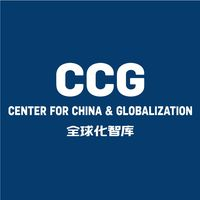China's Economic Blueprint: A New Dawn or Just Another Mirage?
July 27, 2024, 2:31 am
China's economy is at a crossroads. The recent third plenary session of the 20th Communist Party of China (CPC) Central Committee has set the stage for a new economic blueprint. The air is thick with optimism, but beneath the surface, challenges lurk like shadows.
The meeting, a significant gathering of the nation's top leaders, aimed to chart a course for sustainable growth. Officials, including Han Wenxiu, have painted a picture of stability and resilience. They assert that the reforms adopted will not only stimulate growth but also instill confidence in the market. But is this confidence built on solid ground or just a house of cards?
China's economy has shown signs of life. Key macroeconomic indicators are meeting expectations. GDP grew by 5 percent in the first half of 2024, reaching 61.68 trillion yuan ($8.49 trillion). This growth reflects the innate strength of the world's second-largest economy. Yet, the reality is more complex.
Despite the positive numbers, many businesses are struggling. There’s a palpable disconnect between macro data and the experiences of individual companies. Insufficient effective demand and operational difficulties plague various sectors. This disparity raises questions about the sustainability of the current growth trajectory.
The plenum emphasized the need for targeted reforms. The real estate market, a cornerstone of the economy, requires careful nurturing. High debt levels and excessive leverage threaten its stability. Officials have vowed to ensure the delivery of homes and meet the needs of genuine buyers. But will these promises translate into action?
Emerging industries are another focal point. The government aims to cultivate sectors driven by artificial intelligence, biomedicine, and advanced manufacturing. These new quality productive forces are seen as the engines of transformation. However, the path to innovation is fraught with obstacles.
Domestic demand is the lifeblood of the economy. The government recognizes this and is poised to implement stimulus policies. The goal is to boost consumer spending and investment. China’s vast market holds immense potential. Yet, turning household savings into consumption remains a challenge.
The third plenum has introduced over 300 reform measures. These touch on systems, mechanisms, and institutions. The emphasis is on creating a unified national market. This includes integrating urban and rural land markets and establishing a nationwide technology and data market. Such initiatives could streamline operations and enhance efficiency.
However, the success of these reforms hinges on execution. Institutional improvements are necessary to foster high-quality employment. The aged care industry also requires attention as the population ages. Investment in education, healthcare, and pensions is crucial for enhancing livelihoods.
The government’s commitment to boosting domestic demand is commendable. But will it be enough to bridge the gap between macroeconomic growth and individual experiences? Analysts remain cautiously optimistic. They believe that the reforms outlined are both practical and forward-thinking. Yet, skepticism lingers.
China's economic landscape is evolving. The focus on market vitality and the well-being of the people could open new avenues for growth. But the road ahead is not without its bumps. The global economic environment is unpredictable. Trade tensions and geopolitical issues could derail progress.
As China navigates this complex terrain, the stakes are high. The world watches closely. The outcome of these reforms will not only shape China's future but also influence the global economy.
In conclusion, the third plenum has laid the groundwork for a potential economic renaissance. The promise of stability and growth is enticing. Yet, the challenges are real and must not be overlooked. The journey ahead is fraught with uncertainty, but with the right policies and reforms, China could emerge stronger. The question remains: will this be a new dawn or just another mirage? Only time will tell.
The meeting, a significant gathering of the nation's top leaders, aimed to chart a course for sustainable growth. Officials, including Han Wenxiu, have painted a picture of stability and resilience. They assert that the reforms adopted will not only stimulate growth but also instill confidence in the market. But is this confidence built on solid ground or just a house of cards?
China's economy has shown signs of life. Key macroeconomic indicators are meeting expectations. GDP grew by 5 percent in the first half of 2024, reaching 61.68 trillion yuan ($8.49 trillion). This growth reflects the innate strength of the world's second-largest economy. Yet, the reality is more complex.
Despite the positive numbers, many businesses are struggling. There’s a palpable disconnect between macro data and the experiences of individual companies. Insufficient effective demand and operational difficulties plague various sectors. This disparity raises questions about the sustainability of the current growth trajectory.
The plenum emphasized the need for targeted reforms. The real estate market, a cornerstone of the economy, requires careful nurturing. High debt levels and excessive leverage threaten its stability. Officials have vowed to ensure the delivery of homes and meet the needs of genuine buyers. But will these promises translate into action?
Emerging industries are another focal point. The government aims to cultivate sectors driven by artificial intelligence, biomedicine, and advanced manufacturing. These new quality productive forces are seen as the engines of transformation. However, the path to innovation is fraught with obstacles.
Domestic demand is the lifeblood of the economy. The government recognizes this and is poised to implement stimulus policies. The goal is to boost consumer spending and investment. China’s vast market holds immense potential. Yet, turning household savings into consumption remains a challenge.
The third plenum has introduced over 300 reform measures. These touch on systems, mechanisms, and institutions. The emphasis is on creating a unified national market. This includes integrating urban and rural land markets and establishing a nationwide technology and data market. Such initiatives could streamline operations and enhance efficiency.
However, the success of these reforms hinges on execution. Institutional improvements are necessary to foster high-quality employment. The aged care industry also requires attention as the population ages. Investment in education, healthcare, and pensions is crucial for enhancing livelihoods.
The government’s commitment to boosting domestic demand is commendable. But will it be enough to bridge the gap between macroeconomic growth and individual experiences? Analysts remain cautiously optimistic. They believe that the reforms outlined are both practical and forward-thinking. Yet, skepticism lingers.
China's economic landscape is evolving. The focus on market vitality and the well-being of the people could open new avenues for growth. But the road ahead is not without its bumps. The global economic environment is unpredictable. Trade tensions and geopolitical issues could derail progress.
As China navigates this complex terrain, the stakes are high. The world watches closely. The outcome of these reforms will not only shape China's future but also influence the global economy.
In conclusion, the third plenum has laid the groundwork for a potential economic renaissance. The promise of stability and growth is enticing. Yet, the challenges are real and must not be overlooked. The journey ahead is fraught with uncertainty, but with the right policies and reforms, China could emerge stronger. The question remains: will this be a new dawn or just another mirage? Only time will tell.

